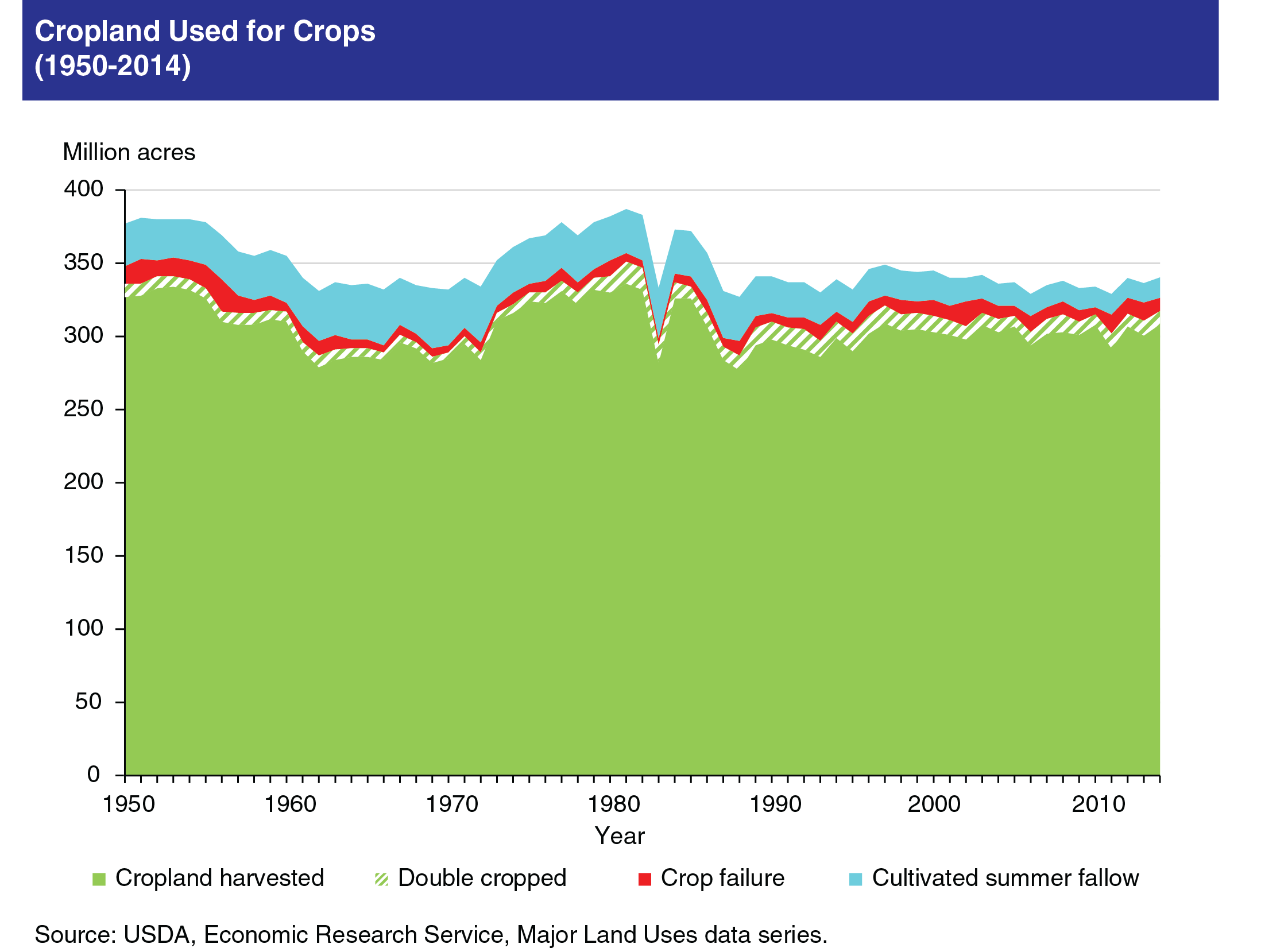Cropland harvested reaches 17-year high amid decline in crop failure
- by Allison Borchers and Daniel Bigelow
- 9/3/2015

The ERS Major Land Uses (MLU) series estimates land in various uses, including the acres devoted to crop production in a given year. These acres, collectively referred to as “cropland used for crops,” include acres of cropland harvested, acres on which crops failed, and cultivated summer fallow. In 2014 (the most recent estimate), the total area of cropland used for crops was 340 million acres, up 4 million acres from the 2013 estimate but in line with the 30-year average. In 2014, cropland harvested increased by 2 percent (6 million acres) over the previous year. The 317 million acres of cropland harvested represents the highest harvested acreage since 1997, when cropland harvested was 321 million acres. The area double cropped—land from which two or more crops were harvested—declined by 1 million acres, a 10 percent decline from the 2013 double-cropped area of 10 million acres. Acres on which crops failed declined by 25 percent over the past year to 9 million acres, the lowest level since 2010. Cultivated summer fallow, which primarily occurs as part of wheat rotations in the semiarid West, has remained relatively stable over the last 10 years, although its use has been declining since the late 1960s. Larger historical fluctuations seen in cropland used for crops are largely attributable to Federal cropland acreage reduction programs. This chart is based on ERS’s Major Land Uses, Summary table 3: Cropland used for crops, updated August 31, 2015 to include 2014 estimates.

